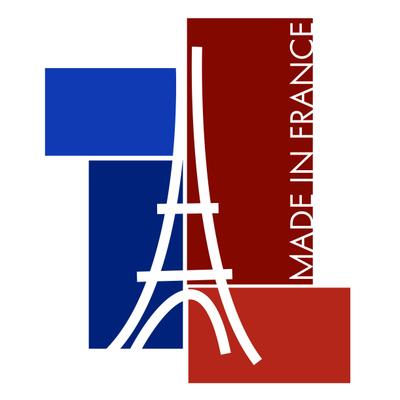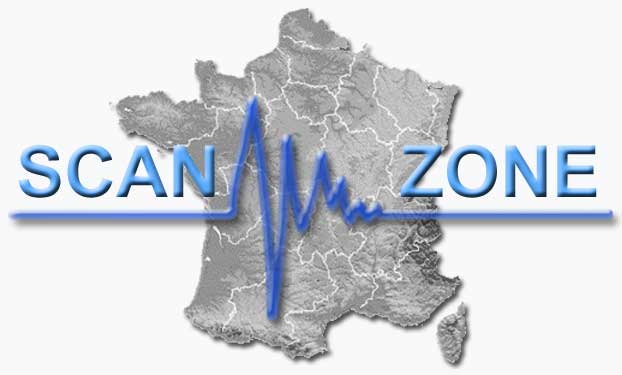Information
- New efficient windscreen -
- Financial support for the transition of HF systems between 694-790 MHz -
Professional performer, audiovisual services provider, producer of cultural shows, news programs or sports events, or other activities requiring the use of equipment such as High Frequency Microphone, HF system, return of HF scene, HF order system, etc., operating in the 700MHz band. All High Frequency Devices located between 694 and 700 MHz, become unusable where 4G 700 MHz mobile telephony is being deployed. The ANFR is therefore setting up "PMSE" or "Program Making and Special Events" support, in accordance with the law of 14 October 2015 and the provisions of Decree 2017-104 of 27 January 2017. This system is designed to help Small structures (CA <40M euros), without structure no help is possible, damage for professionals who owns equipment. Activation will be by geographical area. So if you are eligible; Two possibilities for initiating this request or obtaining information; By Phone : 0 806 802 017 (service gratuit + prix d'un appel) Monday to Friday from 14H00 to 18H00 excluding bank holidays : A telefoner from ANFR will initiate an online application on your behalf. By e-mail : https://aidepmse.anfr.fr/#/ This service is completly free.- The intelligibility of voices in features films and TV movies -
Since a few months and soon, it is not uncommon to have more and more to listen for to just understand what is said, speech covered by a dynamic music, parasitic noise on the significant part of the sentence, voice that disappears before sound effects become more and more present, more and more visible or rude, there is an inflation of technical effects often unjustified or unjustifiable. It is noted that the mixing becomes more and more complex especially regarding its last step, the production of the format export file ready to broadcast. The very large number of possible formats of recordings, the often unnecessary inflation of channels imposing more and more important phase treatments and often less and less justified or harm when they are poorly controlled to listening comfort and broadcast compatibility. It is paramount that the exported mix meets the standards and granted appropriate recommendations on the format chosen to export. Non tout les spectateurs n'écouteront pas leur film dans un auditorium calibré, il devient déjà rare de trouver une salle de cinéma dont le réglage soit en adéquation avec le type de DCP diffusé. Il est donc primordial de retrouver les réflexes de mixer sur de simples écoutes stéréo de qualité normale et en toujours vérifier sur celles ci l'intelligibilité des voix et le niveau des effets, musiques et autre voix off. Not all spectators will not listen to their film in a calibrated auditorium, it is already becoming rare to find a movie theater whose adjustment is in line with the type of DCP broadcast. It is therefore essential to find the reflexes to mix on simple listening stereo of normal quality and always check on them the intelligibility of the voices and the level of the effects, music and other voice off. The dialogue of the actor on the screen has always been an important point of understanding the film. A very good preparation is needed to anticipate problems see return to our advantage by transforming prompt technical difficulty, a real synergy between the actor the desired level of value and the sound synchronous with the said plan. During shooting, the preservation of the direct sound environment, the homogeneity of the records and the preparation of sound materials, in the form of silence or noise, patch and sounds alone remain, throughout the shooting,The sound department's priorities.
- The different stereo recordings -
Which decision criteria for stereo sounding ORTF (XY) or AB or MS or LTRT or Blumleim or 3.1 or 5.1 or 7.1 or 9.1 or Holophonie?
What choice of PCM, HD-PCM or DSD encoding format?
The stereo double jacks, the symmetrization and the different synerges between the couples,
The definition of the sound space, its relation to the image. Use the sound recordings of the public space (square 4.0, star 3.0, 5.1, etc.)
Advantages and disadvantages, upward and downward compatibility, mixing, downscaling, exploitation and broadcasting, advice.
December 2015@@@
- The binaural sound -
December 2015
- New Lithium Battery Transportation Regulations -
A removable battery if it is not on the machine dedicated to it, is isolated (spare backup etc.) and must be compulsorily shipped by a cargo flight. In this case it must not be charged more than 30%.
November 2015
- An update on the frequencies and prospects of the use of HF frequency bands in France -
- Frequencies usable in June 2015 -
The Law of 1 December 2011 prohibits the use of wireless transmissions in the frequency band 790 MHz to 862 MHz, which is reserved for 4th generation mobile telephony only.
- VHF from 174 to 223 MHz is openned by ARCEP autority order N#2010-0849.
- UHF from 470 to 830 MHz is use with DTV (TNT), Maximum power for wireless system (PIRE) is in France 50 mW maximum .
- UHF from 830 to 832 will be statued in futur, and stay available with PIRE > 50 mW.
- UHF from 863 to 865 MHz stay european free band with PIRE >=10 mW maximum.
- Band from 1,785 to 1,8 GHz is free.
- Band from 2,400 to 2,4835 GHz is free.
- Band from 5,470 to 5,725 GHz is free.
June 2015 (up-date July 2015)
- Novelties side systems wireless -
- The 1.9Ghz band is finally accessible with professional wireless systems -
- Using an owner battery for transmitter,
- Using a battery for the owner not compatible receiver with transmitter
- An autonomy announced for the transmitter of 4H.
- An automony announced for the transmitter of 6H.
- Currently no possibility of supplying electret capsules such as Sanken, Tram or DPA capsules.
Positive points;
- Uses the 1900 MHz frequency band.
- Scan dynamic frequency and automatic frequency selection.
- The receiver is switched off by pausing the transmitter.

April 2015
- Sound recorders in 2015-
At the beginning of the 2015's second quarter, various manufacturers are demonstrating great innovation, the recorders now available on the market meet different expectations;The news :
- HORUS Merging, 64 channels with RAVENNA/AES67 links (IP link),
- Sound Device 970, 64 channels 8 micros with MADI et DANTE links(64 channels),
- Aaton Cantar X3, 24 channels, 8 mic, 4 lines and DANTE link(64 channels),
- Sonosax SX-R4+, 16 channels (not available the 01/07/2015),
- Nagra VII, 2 channels,
- Zaxcom Deva 32, 32 channels,
- Nagra VI, 8 channels,
- Sonosax SX-62R, 8 channels,
- Aaton Cantar X2, 12 channels,
- Zaxcom Fusion I, 12 channels,
- Zaxcom Deva VI, 8 channels,
- Zaxcom Deva IV & Deva V,
- Aaton Cantar X1 and X2,
- HBB Portadrive,
- Fostex PD6 et PD4,
- Nagra V, LB, IV.S, IV.2 et Nagra DII, Nagra Arés-C, and Nagra Arés-P,
- Sound device T788, T744 & T722,
- le Edirol R-4,
- Roland R88 (8+2 channels) and R1000 (48 channels)
April 2015 (up-date july 2015)
- List of practical computer programs -
The majority of these programs are under open source license unless otherwise specified on the RESSOURCES page.April 2015
- Testing the Nagra VII Recorder (alias Nagra Seven) -
A newcomer in professional recorders on the market, the Nagra VII, good to say rather Nagra Seven is what is written on it ...October 2013
A very useful site to know the frequencies that could be available in each French region, with the kind permission of DCA & Tapages:
September 2010
- Testing the Nagra VI Recorder -
I will rather let you read ...September 2008
- Warning to the Digital TV terrestrial frequency plan that uses the same frequency plans that our systems without son. -
The emission powers of these emitters are very variable, so we find emission powers varying between 5 Watts on Bordeaux and 35 KW at Montpellier. It is legitimate to wonder about such difference of power, why the dispersion of carriers it is 7000 times greater in the south of France? Has anyone noticed a pollution of our RF signals? In which areas? These signals emit on frequencies between 473,834 and 858,498 MHz in Horizontal polarization.We know that are these frequencies that we never use! For information about the Paris region, there are three distinct zones: Paris Eiffel Tower (20 Kw), Paris Nord to Sannois (500W), Paris Sud to Villebon (222W) and Paris Est to Chènevières (620W). To use the following frequencies 474, 498, 522, 538, 562 and 586 MHz with a maximum variable of 0.498 MHz.
Long live the Comteks in 216 Mhz and TC in 418 MHz!
For information here is the link to List of frequencies used by the Digital Terrestrial Television DTT)In the French regions.
June 2008
- What successors to DAT digital recorders ?-
Octobre 2005
- Coming soon two highly anticipated products-
Juin 2005





